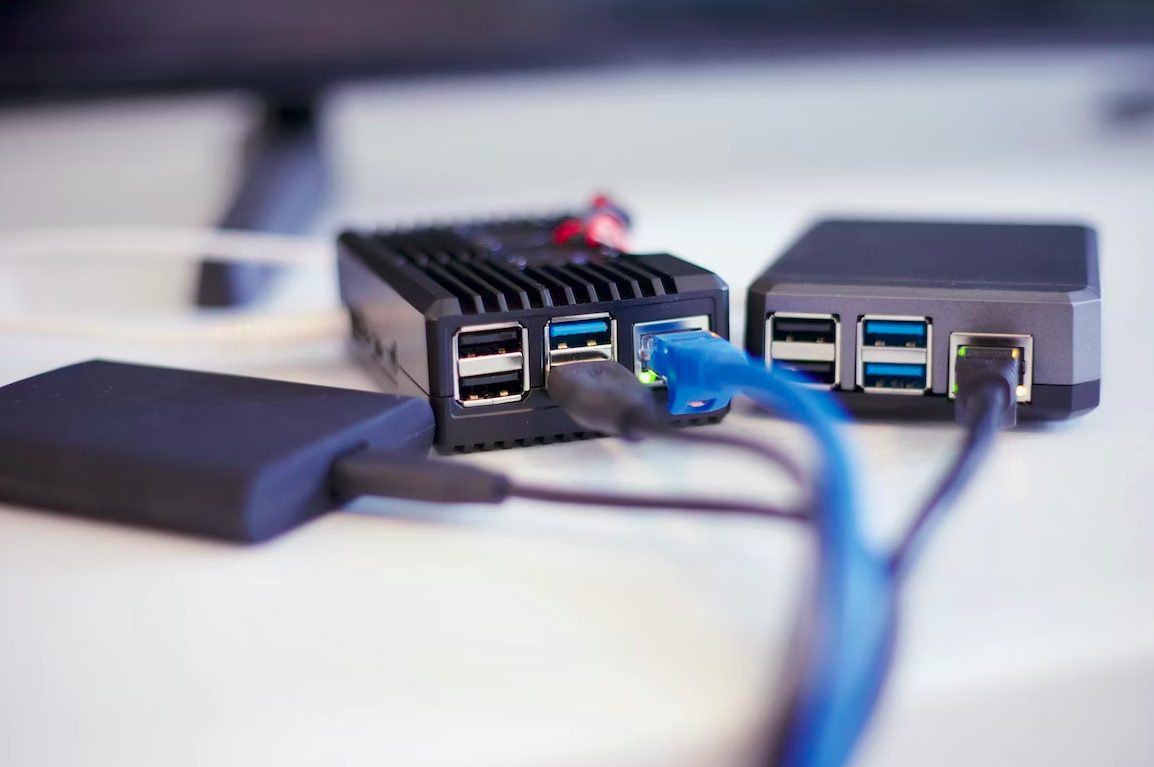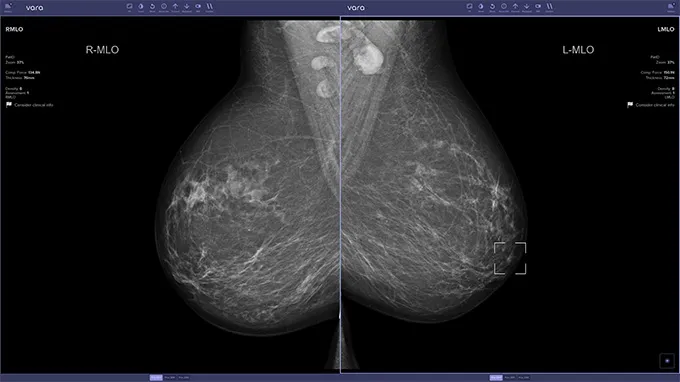Raspberry Pi Servers: 9 Unique Options to try

The Raspberry Pi is a versatile computer that can be used for a variety of tasks. It can be used to light up LEDs, write work emails, stream movies to old televisions or monitors, and even host a game server. We will explore the different servers that can be hosted on a Raspberry Pi single-board computer.
Hosting a server on a Raspberry Pi is a great way to make use of its resources. The single-board computer’s hardware can handle many hosting applications without any issues. Let’s take a look at some of the servers that can be hosted on a Raspberry Pi SBC.
Apache and Nginx as Web Servers
A web server is a computer that provides web pages to users on request. It stores the component files such as HTML, CSS, and JavaScript and processes requests to access them. Apache and Nginx are both excellent options for setting up a web server on a Raspberry Pi.
Apache is a popular cross-platform software solution that is capable of accepting user requests and sending them their requested files. It is responsible for over 67% of websites worldwide. Nginx is another great alternative that you can use instead of Apache.
To set up a web server on your Raspberry Pi, you will need to install Apache or Nginx and relational database management software such as MariaDB. The database software is necessary to store user data and other important information. Apache and Nginx are both easy to install on a Raspberry Pi. Once installed, you can configure them to serve web pages to users on request. You can also customize your web server to meet your specific needs.
MariaDB: Your Go-To Database Server
MySQL is a popular solution for database management, but unfortunately, it is not available for installation on the Raspberry Pi. However, you can use MariaDB instead, which is compatible with MySQL for the most part, with only a few minor differences.
MariaDB is a free and open-source relational database management system that is widely used in web hosting environments. It is designed to be fast, scalable, and reliable, making it an excellent choice for hosting your database on a separate platform.
To set up MariaDB on your Raspberry Pi, you will need to install it using the Linux package manager. Once installed, you can configure it to store and manage your website’s data. You can also configure it to work with other software solutions that you might be using on your website.
Samba and NFS as File Servers
A file server is a computer that stores and provides access to files and documents over a network. It can be a great way to save space on your main computer while still having your files available for easy access. You can set up a file server on your Raspberry Pi using Samba or NFS.
Samba is the most common way to set up a file server on a Raspberry Pi. It allows you to share files across your network. This makes it easy to exchange files between several computers in your local network with minimal setup. However, you will need a good SD card or SSD to avoid transfer bottlenecks.
NFS is an alternative to Samba that offers better encryption and is slightly easier to set up. It is a great option if security is a top priority. NFS allows you to share files across your network using the NFS protocol, which is designed for high-performance file sharing. To set up a file server on your Raspberry Pi using Samba or NFS, you will need to install the appropriate software and configure the settings.
Use vsftpd and ProFTPD as FTP Servers
An FTP server is a type of server that allows users to store and access files over the internet. Unlike file servers, which are generally more secure but have limited accessibility, FTP servers can be accessed from anywhere in the world. ILet’s see how you can set up an FTP server on your Raspberry Pi using ProFTPD or vsftpd.
To host an FTP server on your Raspberry Pi, you will need to install and set up an FTP program such as ProFTPD or vsftpd. ProFTPD is a feature-rich, high-performance, and highly secure FTP server that is easy to set up on a Raspberry Pi. Similarly, vsftpd is a lightweight and secure FTP server that is easy to install and configure.
Once you have installed and configured your FTP server, you can connect to it using any FTP client that is supported by your operating system. This will allow you to upload and download files to and from your Raspberry Pi, making it easy to access your files from anywhere in the world.
BIND, dnsmasq – DNS Servers
A DNS server is responsible for translating domain names to IP addresses. Setting up a local DNS server can have several benefits. These include improved security, domain blocking, faster access to frequently visited sites, and the ability to create your own local domain names. Here’s how you can set up a DNS server on your Raspberry Pi using BIND or dnsmasq.
BIND is a fully-featured DNS server that is capable of acting as an authoritative and recursive name server. It is the best option if you’re interested in setting up a DNS server on your Raspberry Pi. However, it can be complex to set up and may require some technical expertise.
Dnsmasq is a lightweight and easier-to-use alternative to BIND. It has fewer features but is much simpler to set up and configure. It is a great option for those who are new to DNS servers or who want a simple and straightforward solution. Once you have set up your DNS server, you can configure it to translate domain names to IP addresses.
Postfix, Dovecot – Mail Servers
Hosting a mail server on a Raspberry Pi can be a rewarding learning experience. However, doing so requires a considerable amount of work and comes with some downsides. You can set up a mail server on your Raspberry Pi using Postfix and Dovecot.
Postfix is a popular mail transfer agent that can be used to send and receive email on a Raspberry Pi. It is easy to install and configure, making it an excellent choice for beginners. Additionally, Dovecot is a popular mail delivery agent that can be used to access your emails.
Setting up a mail server on a Raspberry Pi involves installing and configuring Postfix and Dovecot. Also it involves configuring your DNS records to ensure that your mail server is properly configured. Once set up, you can send and receive emails using your Raspberry Pi.
Running a mail server on a Raspberry Pi requires a significant amount of work and comes with some downsides. For example, you may need to configure your server to comply with anti-spam regulations. Additionally, running a mail server can consume a lot of resources and may affect the performance of your Raspberry Pi.
OpenVPN, WireGuard – VPN Servers
A VPN server is a great way to create an efficient network by encrypting the connection between devices. This makes it difficult for third parties to intercept or access the data transferred. Setting up a VPN server on your Raspberry Pi — using OpenVPN or WireGuard — can be a great way to create a secure and private network.
It’s noteworthy that running a VPN server on a Raspberry Pi requires some technical knowledge. There are security risks involved if not properly secured. You should take the necessary precautions and always keep your system up-to-date.
OpenVPN is a popular open-source VPN solution that is easy to install and configure on a Raspberry Pi. It provides a secure and reliable VPN connection that can be accessed from anywhere in the world.
WireGuard is a newer VPN protocol that has gained popularity in recent years due to its speed and security. It is also easy to install and configure on a Raspberry Pi, making it an excellent choice for those who are new to VPN servers. Once you have set up your VPN server, you can connect to it using any device that supports VPN connections.
Plex, Emby – Media Servers
Many Raspberry Pi users choose to use their device as a storage and management solution for their media collection. This includes movies, music, TV shows, and photo albums. While Plex is the most popular choice for setting up a dedicated media server, there are other alternatives worth considering, such as Jellyfin and Emby.
All three options offer apps for a variety of operating systems. Plex, however, is often considered to provide better performance and more extensive support resources. If you encounter any issues, Plex’s community is more likely to help you out. Stream movies, TV shows, and other content easily on any device by setting up Plex on your Raspberry Pi.
Minecraft, Terraria – Game Servers
If you have a Raspberry Pi lying around, you can put it to good use by turning it into a game server during your free time. Minecraft and Terraria are the most popular options for hosting a game server on a Raspberry Pi. While both games have sandbox elements, Terraria is more action-oriented. However, Minecraft is more focused on creativity and exploration.
To host either game on your Raspberry Pi, you’ll need to install the appropriate server software. For Minecraft, you’ll need to install Nukkit, while TShock is required for Terraria. The process of setting up a server for both games is similar. Meaning if you can host a Minecraft server on your Raspberry Pi, you can easily do the same for Terraria.
Raspberry Pi Servers: The Wrap Up
Using a Raspberry Pi as a server is a popular choice among its users. Hosting one or more servers on a single Raspberry Pi can be done for various reasons. However, it’s essential to keep in mind that the hardware limitations of a Raspberry Pi can affect its performance if you host multiple servers on it. So, it’s important to take these restrictions into account when deciding to run servers on a Raspberry Pi.






